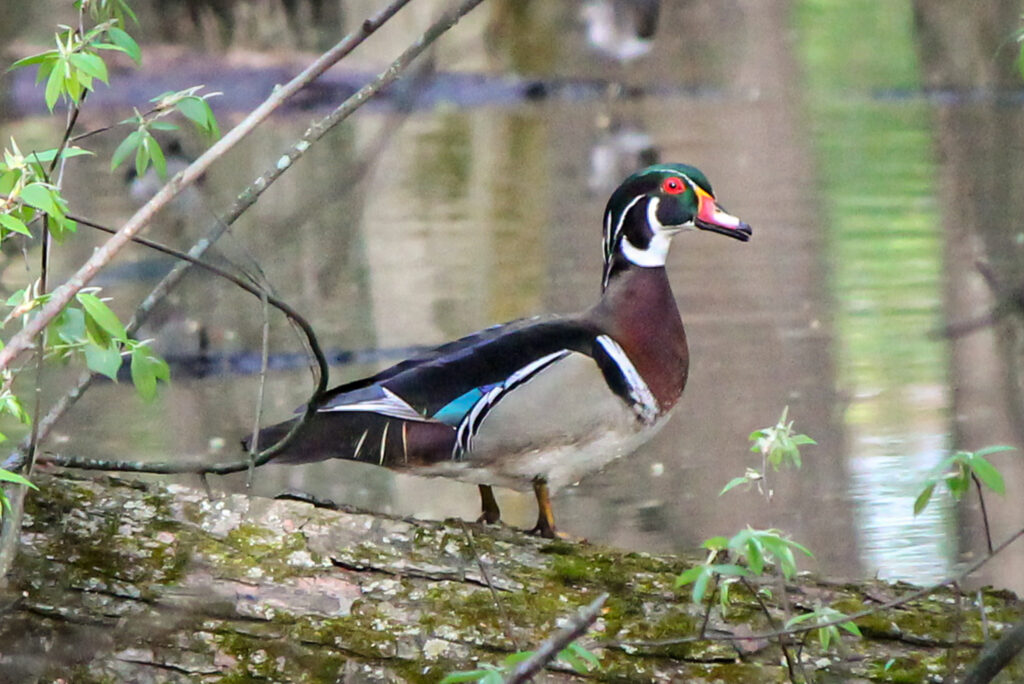Does Your Bird Photograph Stand Out?
Artistic Quality is the third Image Characteristic of the Quality Self-Assessment Rubric(QSAR) for Bird Photographs. The previous two Image Characteristics of Technical Quality and Content (pull down the QSAR menu above to access – it is recommended you download the rubric to use as a guide from the QSAR Menu item above) had more to do with capturing and modifying a bird photograph. Artistic Quality is designed to help you judge for yourself the final quality of that photograph. There are three Components within Artistic Quality: Originality, The Story Within The Photograph, and Impact. We begin with Originality; you can jump to the other two using the links below:
The Story Within The Photograph
Impact
11. Originality
I see lots of bird pictures – in magazines, on GreatBirdPics.com, on eBird and other websites. The ones that catch my eye aren’t just tack sharp and fill the frame appropriately. They display the bird in a unique way or a from a point of view I hadn’t seen before. This is rather subjective; the more bird photographs you see the less likely one is going to look unique or original. Yet it happens all the time, particularly when looking at award winning photographs. When you read how the photographer got those shots – lying down on their stomach for hours on end, going out in a camouflaged canoe every day, tracking down a rare visitor to the region – you appreciate the originality of the shot.
The summer issue of the Audubon magazine arrived recently and it featured the 2021 Audubon Photography Awards. I was eager to see the photographs that won this prestigious photography contest. I expected photographs of exotic birds from far away lands and was surprised to see that the top awards were of species found right here in the midwest: Red-tailed Hawk, Sandhill Crane, Northern Cardinal, Northern Harrier, Purple Sandpiper, Peregrine Falcon, and Red-winged Blackbird. Typical birds seen in many places but the shots were original – a baby Sandhill Crane perched atop its parent’s head, the wingtip of a Cardinal as it glances off the snow-covered ground, a Red-winged Blackbird as it drives its beak into a flower on a lily pad. You can see all the winners of the 2021 Audubon Photography Awards by Clicking Here.
You can capture Award Worthy photographs of common species – you have to be either very lucky, very tenacious, or both (I believe in the motto, “The harder I work, the Luckier I get”). While looking at the Audubon winners be sure to read the Behind the Shot story for each image. You will see some of the photographers went to great lengths to get the shot while others happened to be in the right place at the right time. No matter how they got it, they ended up with a photograph that showed a lot of originality. Below is the Originality Component of the QSAR:
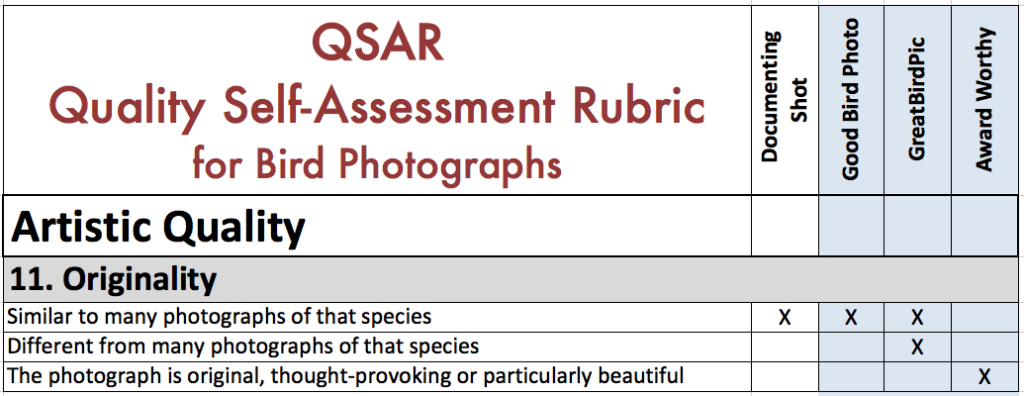
The three Levels of Quality shown demonstrate how the originality of a photograph is directly tied to its quality; each are explained below with example photographs from the Four Types of Bird Photograph.
Similar to many photographs of that bird = Documenting Shot, Good Bird Photo, or GreatBirdPic
I did an analysis of my bird pictures in my Lightroom Catalog and found that about 30% of them were Documenting Shot quality and 31.5% were Good Bird Photos. I rated them as such for a variety of reasons: poor focus, bad lighting, or parts of the body obscured. Even if they displayed some originality the technical defects could not be overcome.
About 37.5% of my photographs are GreatBirdPic quality (I tend to save the better images). These photographs have good focus, lighting, and composition – that’s what defines them as GreatBirdPics. Many of them, however, lack Originality. That doesn’t detract from them, as they can be beautiful to look at, it’s just they are just HO HUM pictures – technically good pictures I’ve seen hundreds of time before. No originality, just a shot of a bird. Granted, birds don’t often cooperate and pose for us in unique ways. We take their picture anyway, and there’s nothing wrong with that.
To illustrate this point we’ll use some photographs of Wood Ducks, a favorite of mine. These first two are rated Documenting Shot – they are a little far away, poorly lit, not very interesting and show no Originality.
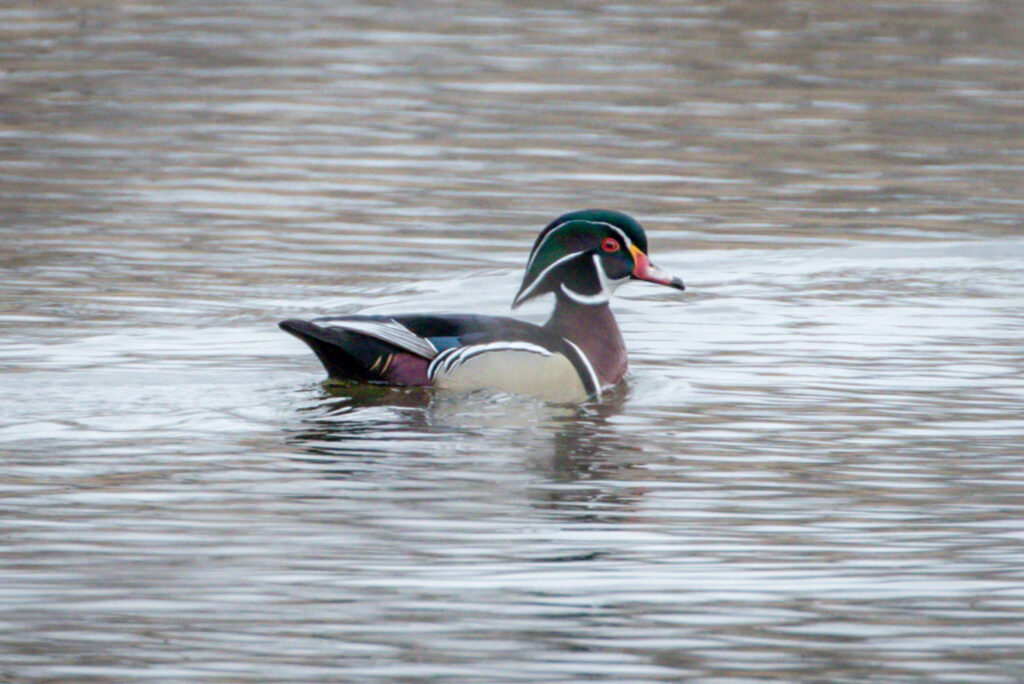
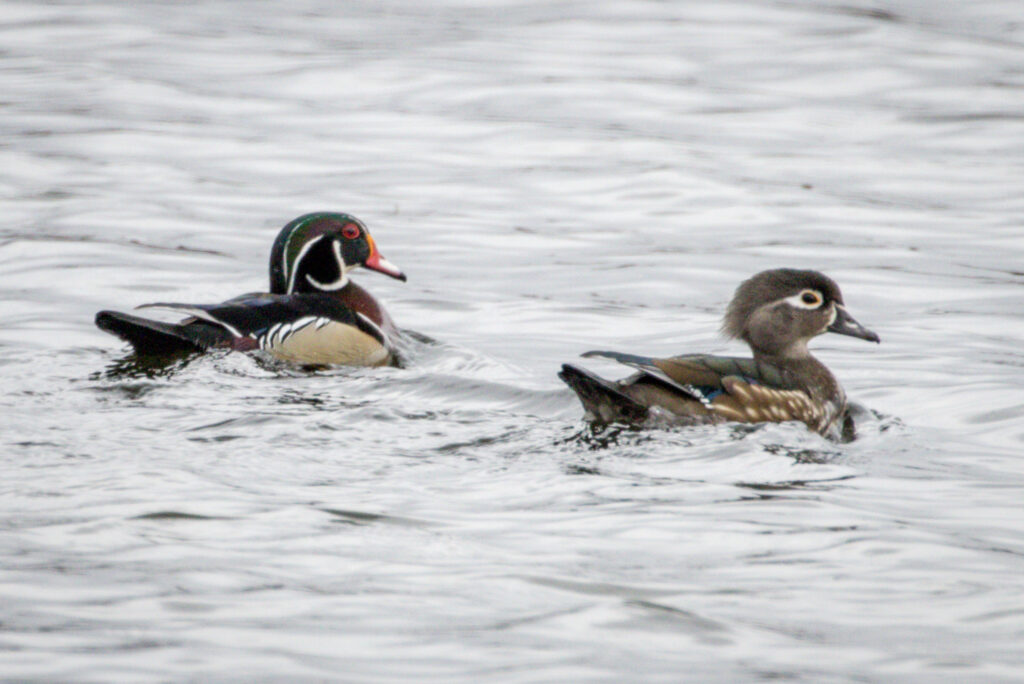
Let’s follow those up with some better pictures technically (Good Bird Photo) but are still of the “HO HUM” variety. They look fine but there is nothing there other than the bird to catch the eye of the viewer. There is no Originality in them either.
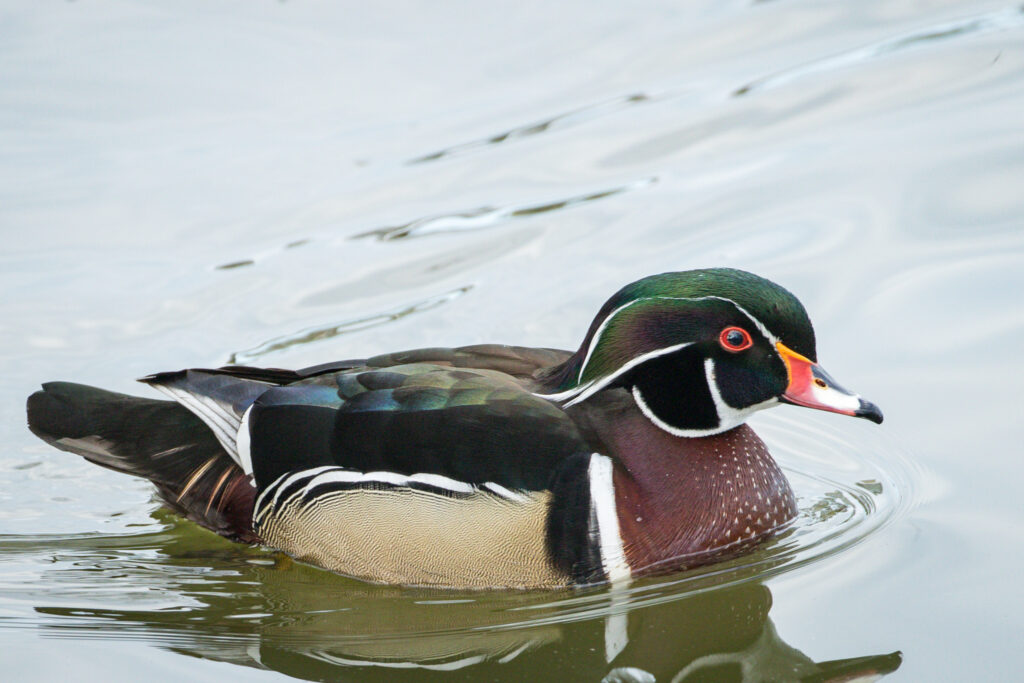
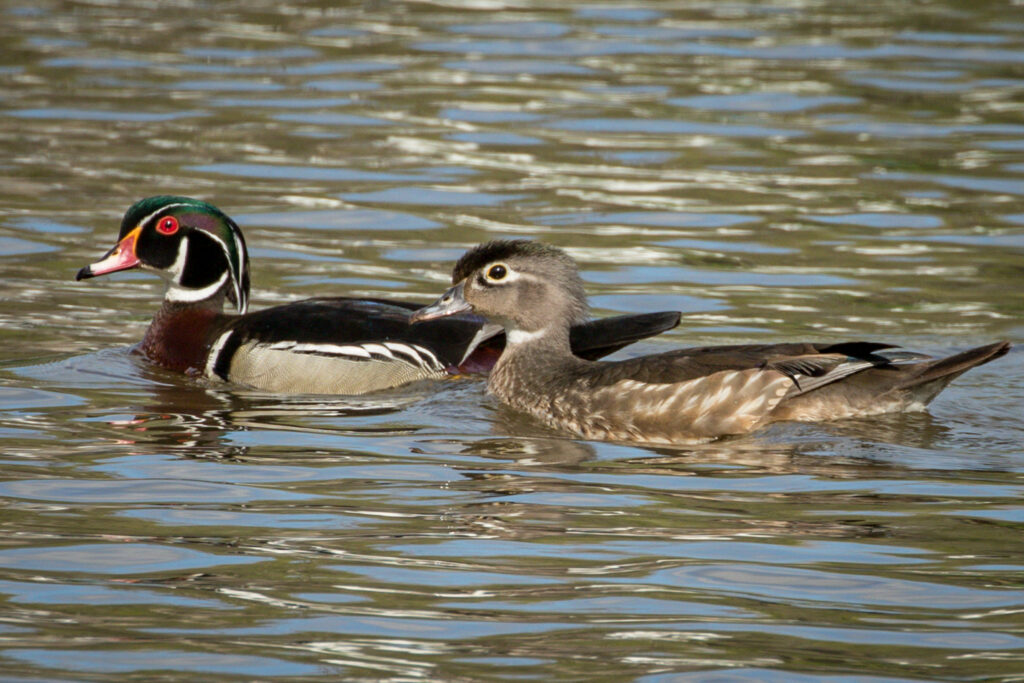
Finally, let’s look at some GreatBirdPic quality pics that are technically very good but are like a lot of Wood Duck Pictures. They don’t stand out from the crowd.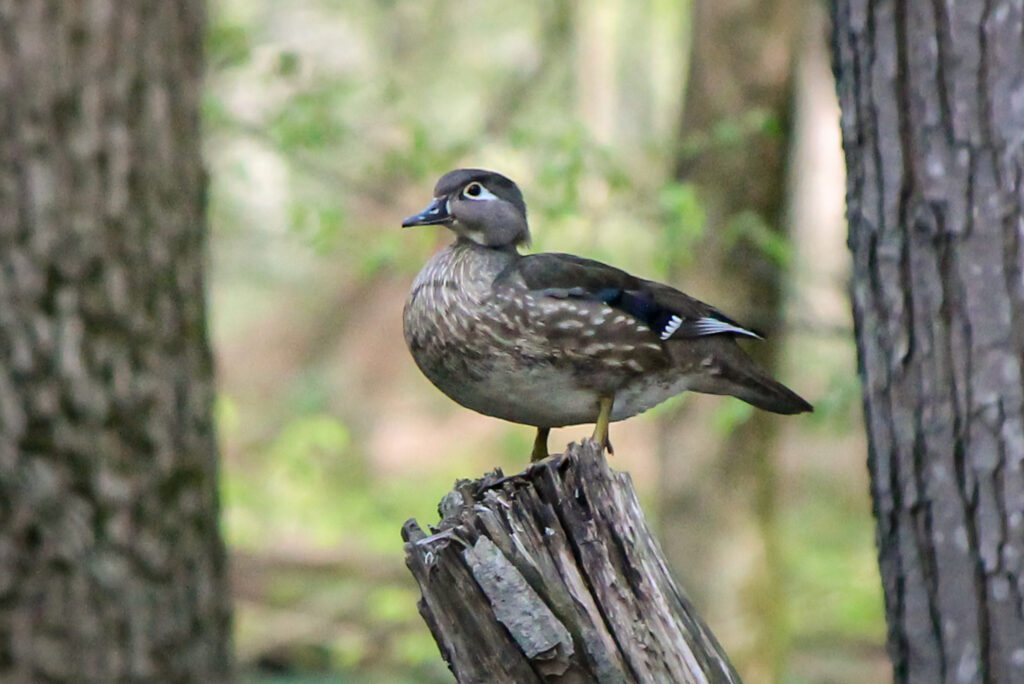
Different from many photographs of that species = GreatBirdPic
Note that GreatBirdPic quality pics are listed in both Levels of Quality 1 and 2. These photographs have good Focus, Lighting, and Composition – that’s what defines them as GreatBirdPics. Some are the “HO HUM” variety of GreatBirdPic and others show some Originality.
The Originality of a bird photograph can come in subtle ways. Take a look at these next three photographs of the same Wood Duck. The first picture is good but kind of “HO HUM.” The second is a bit more interesting as it shows its drooping crest behind the head. The third one is the most interesting/original. You can still see the crest but you can also see that it is vocalizing. Perhaps not unique among the millions of Wood Duck photographs taken, but certainly different from many – the best GreatBirdPic of the three.
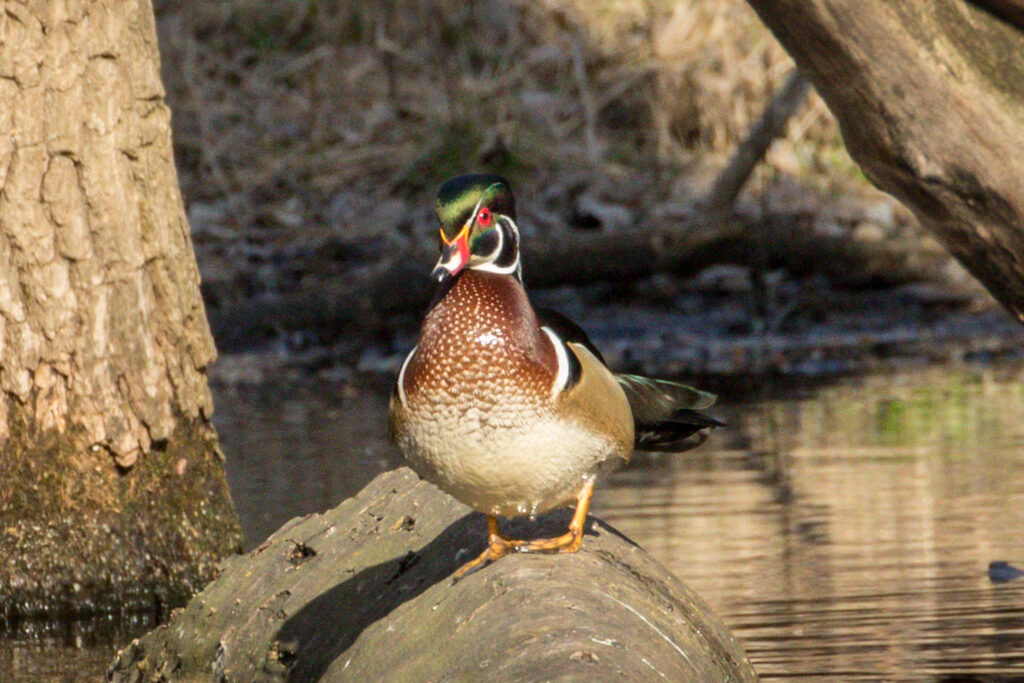
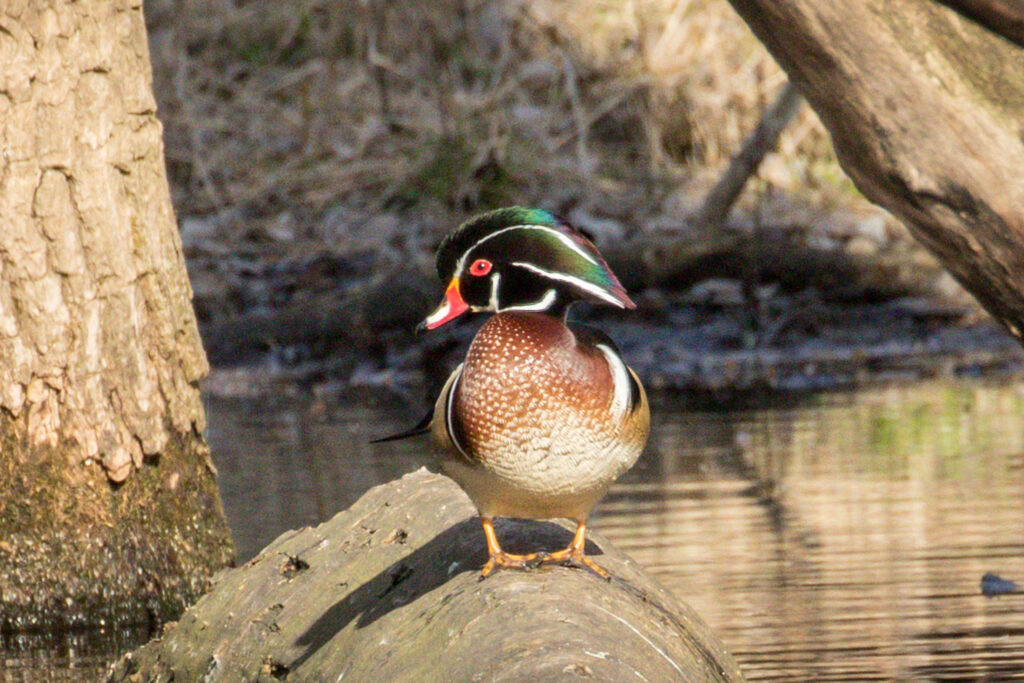
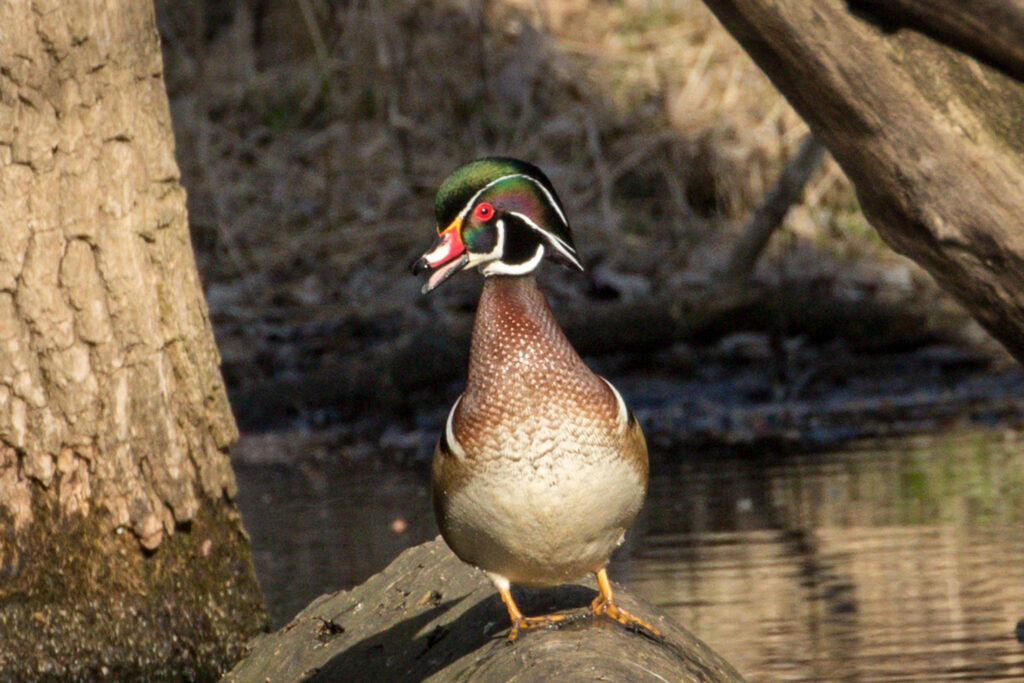
Let’s take another view of one of the previous pictures. It was shown as a Good Bird Pic above because it was rather “HO HUM.” However if we crop it differently it becomes different from many pictures of Wood Ducks and now can be considered a GreatBirdPic. Can you see the difference?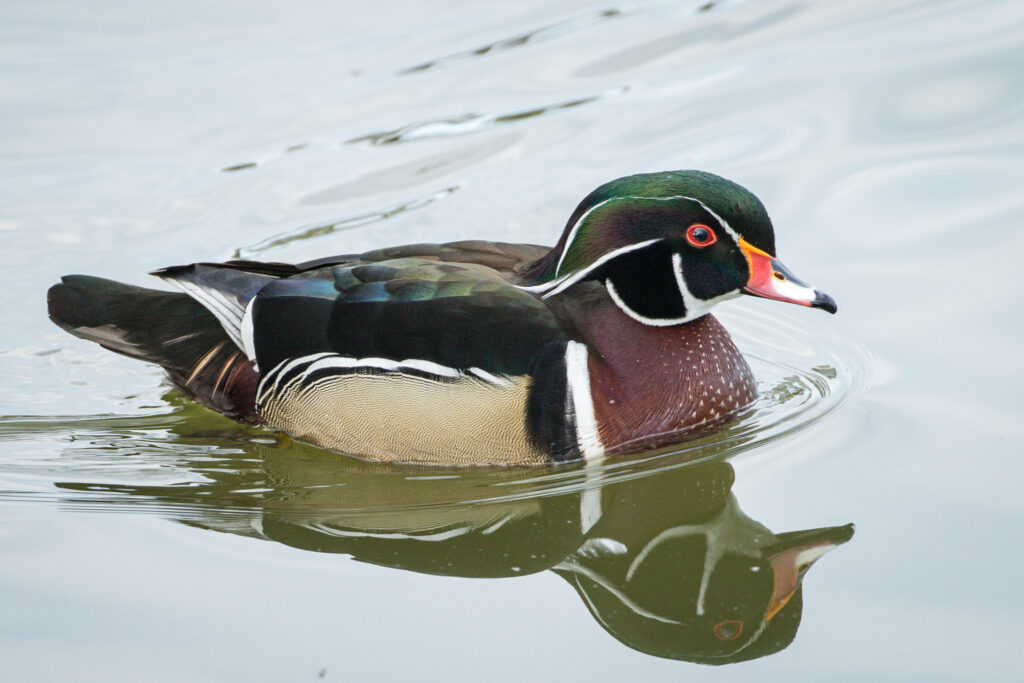
The photograph is original, thought-provoking or particularly beautiful = Award Worthy
Less than 1.5% of my bird photographs are Award Worthy quality. They each have good technical qualities, but they have more – they have some Artistic Quality, usually in the form of Originality. Take a look at our final two Wood Duck photographs and ask yourself, “Have I ever seen a Wood Duck picture like that?” If not, they pass the originality test.
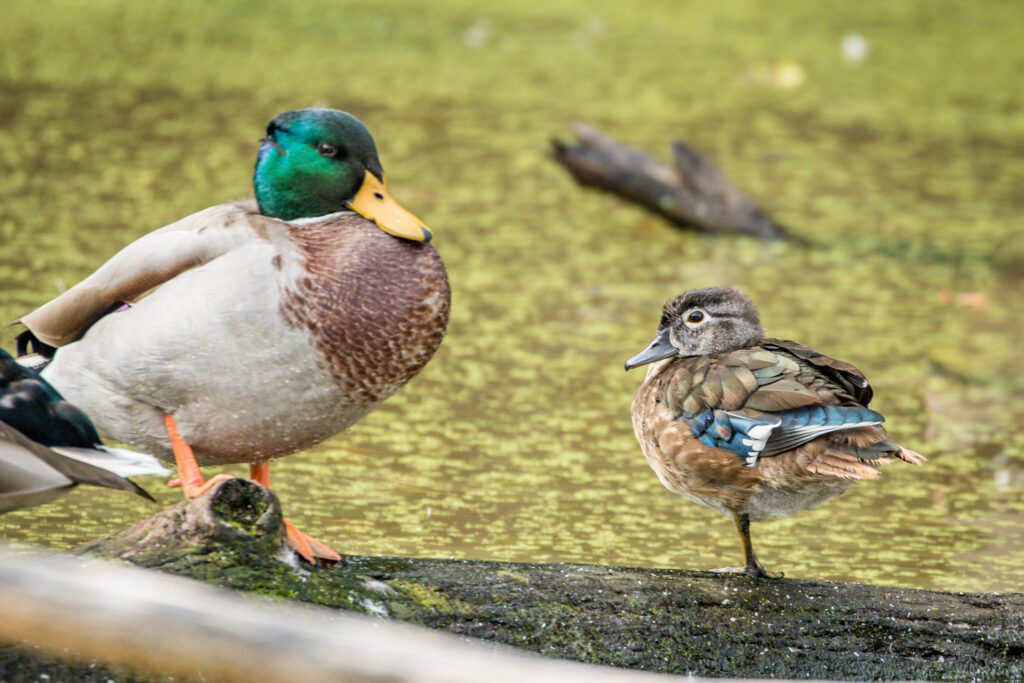
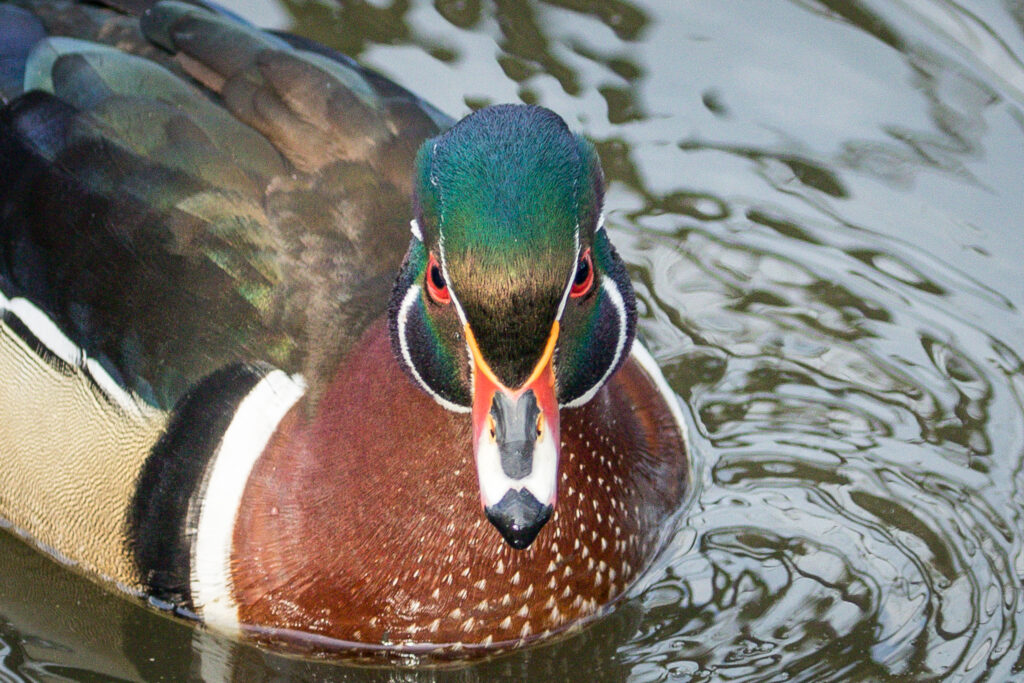
This third Level of Quality also includes “thought provoking” and “particularly beautiful” as criteria for Award Worthy. Each are tied to Originality; a photograph meeting either of these two criteria are by definition Original. Take a look at these last two Wood Duck photographs. The first, by Will139, is “thought provoking” in that you wonder why is it yelling at me? why is it running?
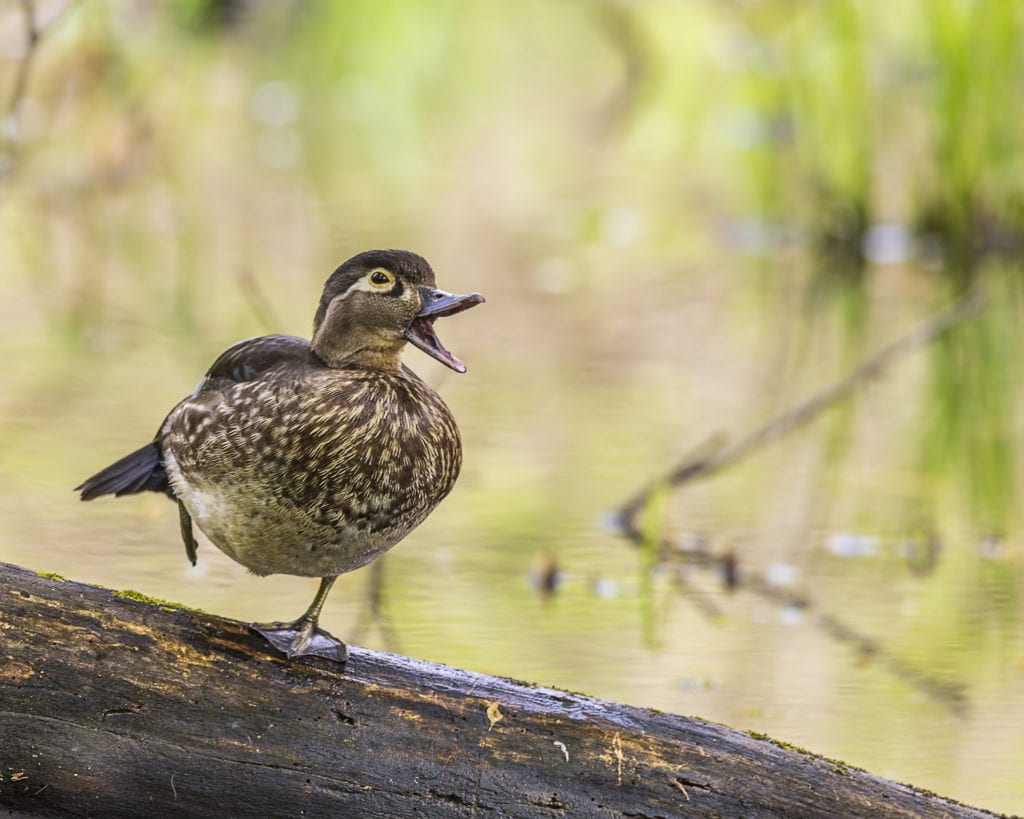
Our last example is “particularly beautiful” with the male and female wood ducks perched on the rotting wood with the green lichen under their feet.
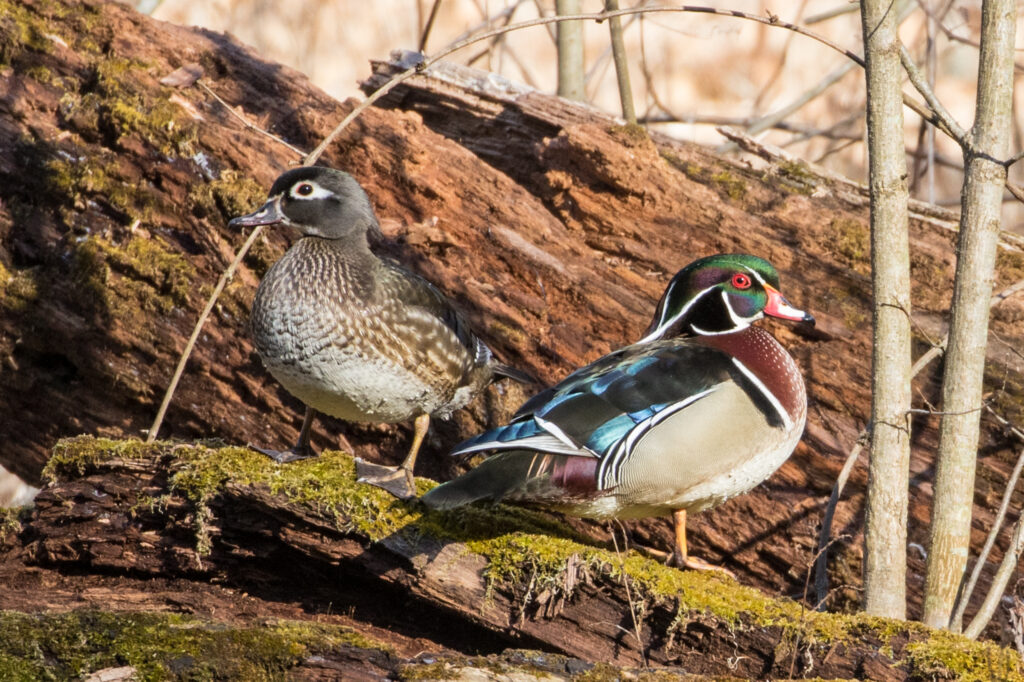
If you want your bird photographs to stand out from the crowd they have to be Original, thought provoking or particularly beautiful. You can have good bird photographs that lack these qualities, but if you’re going to enter a photography contest make sure your entries contain a spark of Originality.
12. The Story Within The Photograph
I’ll bet that if I had a category for describing the activity the bird is engaged in on GreatBirdPics.com that was called, “Just Perched/Standing/Floating” it would be used for most of the pictures. This is true for a lot of reasons: the camera “stops” action, it’s easier to get a good picture of a bird when it isn’t moving, and birds aren’t always doing something interesting. On the other hand, sometimes we do capture a bird in action.
Once in a great while we create a photograph that shows more than action – it tells a story. The environment the bird is in combined with what the bird is doing can convey a story to the viewer. It’s not necessary to capture the bird in action to tell a story, but when the photographer captures just the right moment the viewer is able to interpret the scene as part of a narrative. The more complex the story, the higher quality the photograph. Below is the Story Within The Photograph Component of the QSAR:

The three Levels of Quality demonstrate how much a photograph conveys a narrative to the mind of the viewer, which helps to determine the quality the photograph. Each Level of Quality is explained below with example photographs from the Four Types of Bird Photograph.
The Photograph Doesn’t Tell a Story = Documenting Shot, Good Bird Photo, or GreatBirdPic
The vast majority of my pictures don’t tell a story. It doesn’t mean they are bad pictures, it just means they are not good enough to enter in a photography contest. They depict birds sitting/standing/floating – their quality rests more on the technical merits of focus, composition, and lighting. To illustrate, I’ll be using examples of Common Goldeneyes I’ve taken over the years.
We begin with a Documenting Shot of a female Goldeneye floating on the water. Poor lighting and poor composition (too small for the frame). Not much going for this photograph.
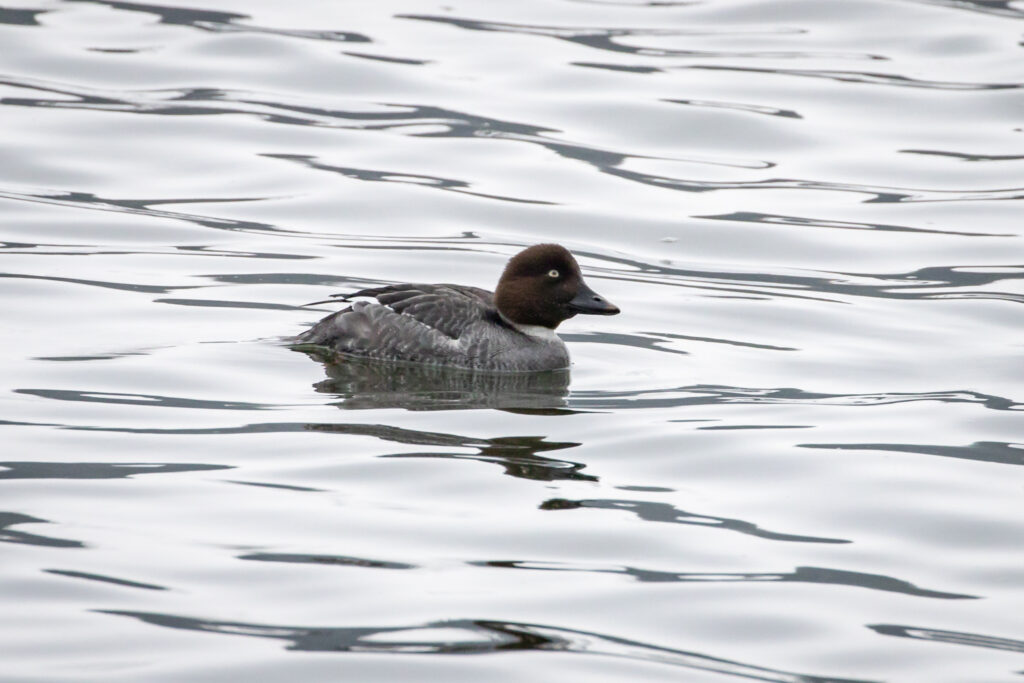
Our next example is of a male Goldeneye floating on the water. Better lighting and it fits the frame more fully. No action shown but technically a Good Bird Photo.
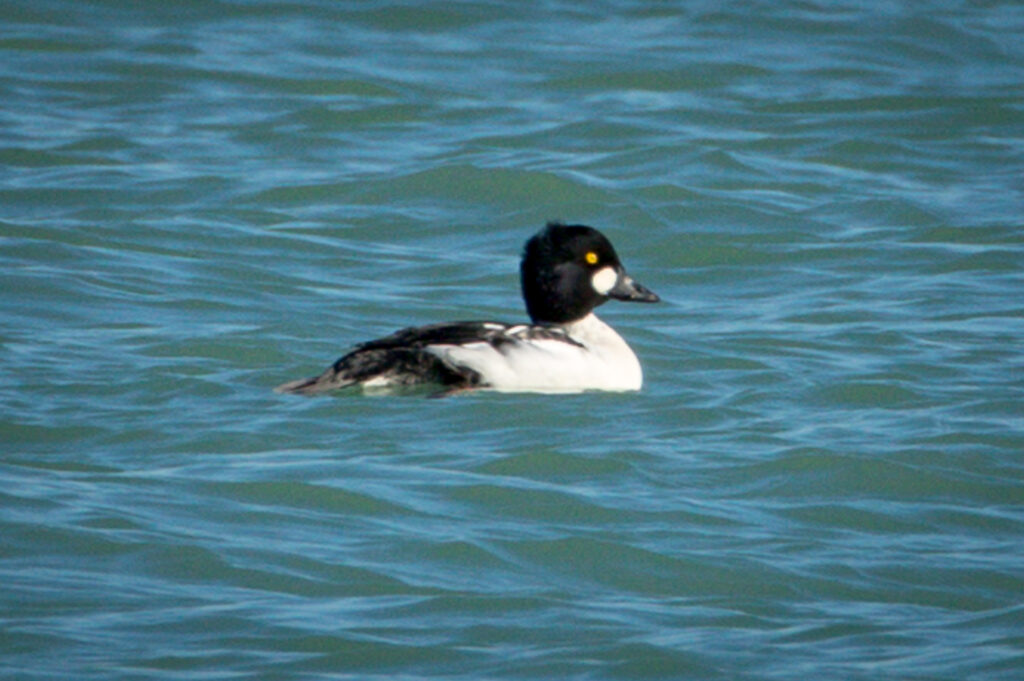
Finally, a GreatBirdPic of a male Goldeneye floating with its beak somewhat open. It’s technically good and displays the Field Marks of the bird well. No story is being told here – it won’t win any awards – but a pretty good exemplar of a male Goldeneye.
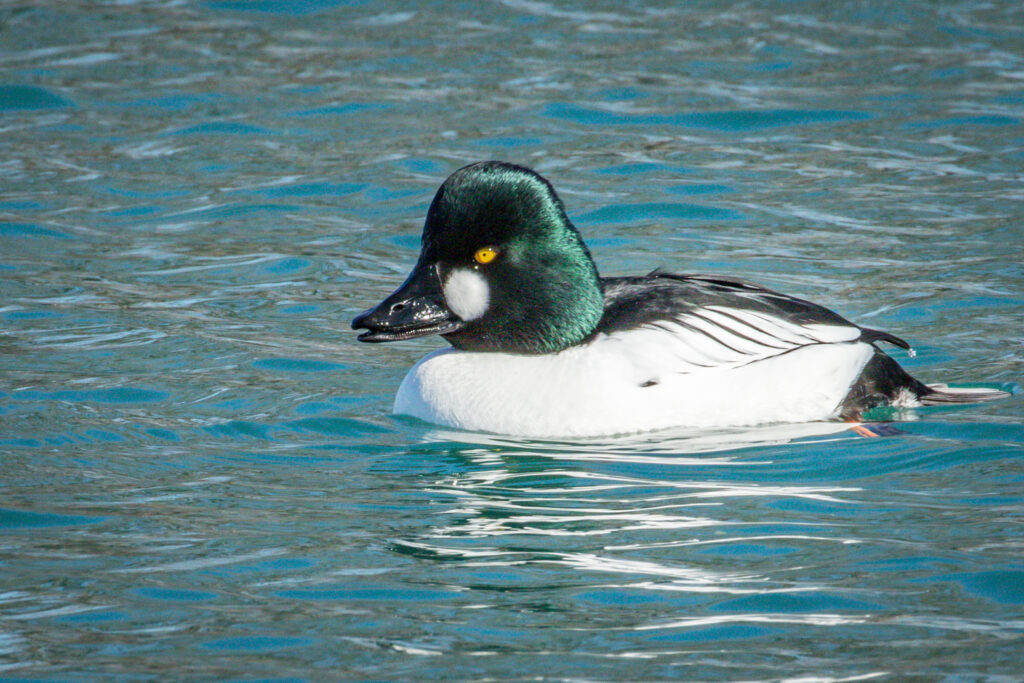
The Photograph Depicts action but falls short of telling a story = Good Bird Shot or GreatBirdPic
Even if a Documenting Shot depicts some action, the poor technical aspects of the photograph limits its overall quality. Photographs with better technical quality (Good Bird Shot and GreatBirdPic) that capture some action will engage the viewer more. Actions such as singing, flying, foraging for or eating food, and swimming are all interesting activities viewers like to see. We learn more about the bird when we see them in action. Action doesn’t necessarily convey a story, however. Seeing a bird singing is interesting and elevates the quality of the photograph, but it may not be enough to prompt the viewer to build a story surrounding the bird.
Here are a couple of Good Bird Shot quality photographs that show some action. Our first one displays the male in a “Masthead” breeding pose. A little small for the frame and poor lighting, but the action displayed, including the wake of water behind the bird elevates the quality.
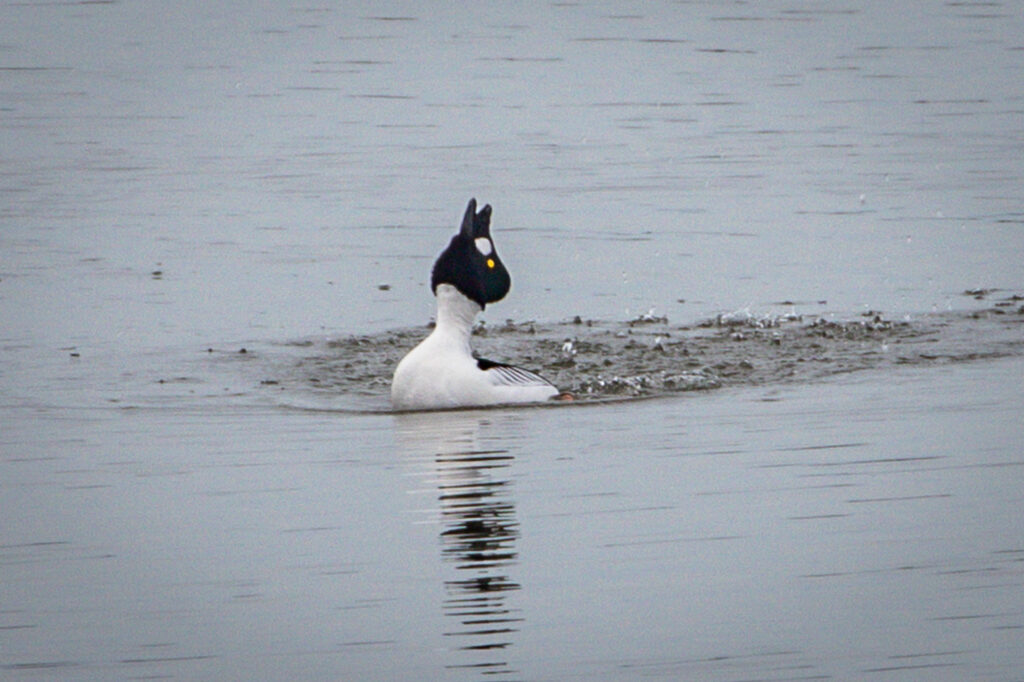
I like taking Bird in Flight (BIF) shots because they are so challenging. Trying to keep the camera focused on a bird streaking by is no easy task. Factor in the lighting and angle of the bird to the camera and it can be very tough to end up with any usable shots. Below is a decent shot but poor lighting detracts from the photograph. However the flying action is interesting – it’s better than just sitting in the water.
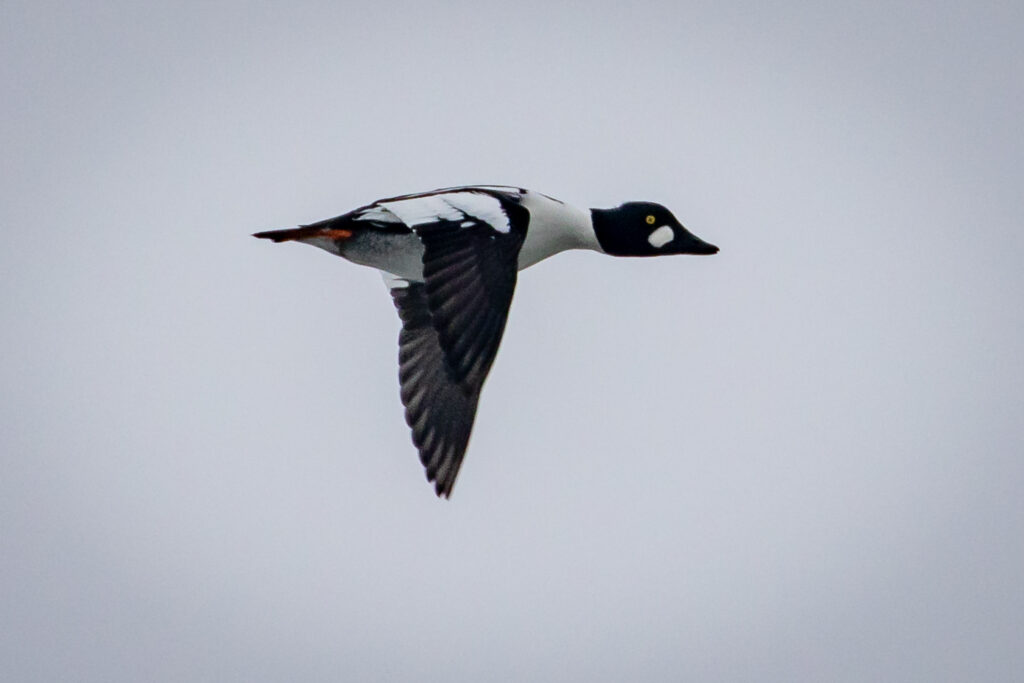
Our final Good Bird Photo example shows a female rearing up out of the water. A little bit of action but poor lighting and a bit too far away to get a good look at the bird.
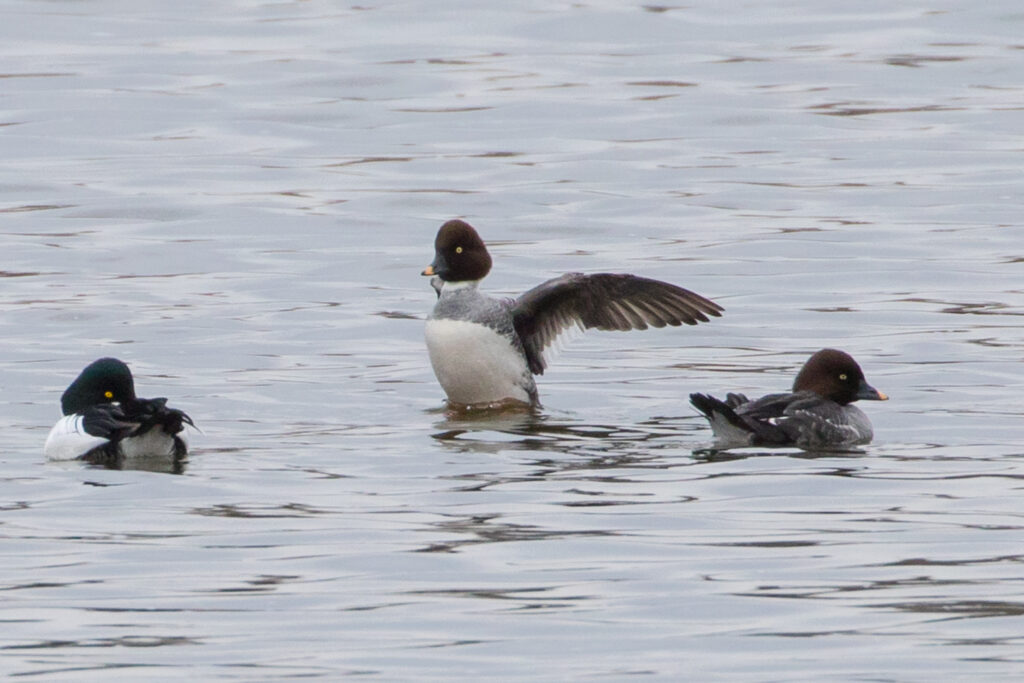
Moving on now to GreatBirdPic quality photographs in the second Level of Quality. As you can see below they have better technical qualities than the above images. They depict some action but fall short of telling a story. Our first example is pretty good – again it show the “Masthead” pose and includes some vocalization and even some foot action.
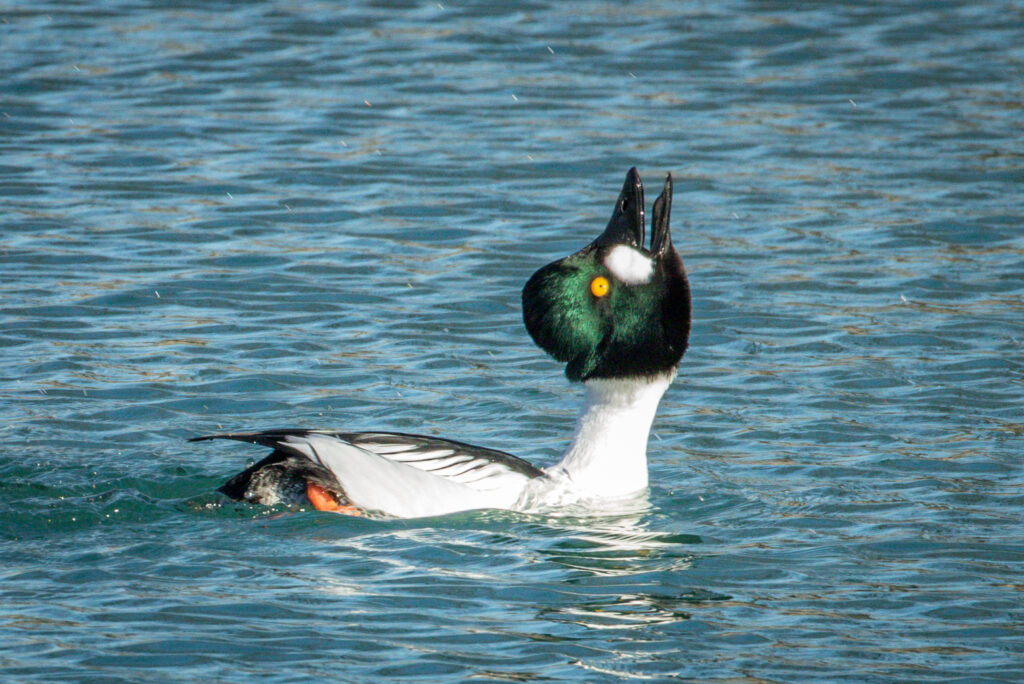
Here’s a better BIF picture with not one, but two Goldeneyes! Pretty good lighting helps this one.
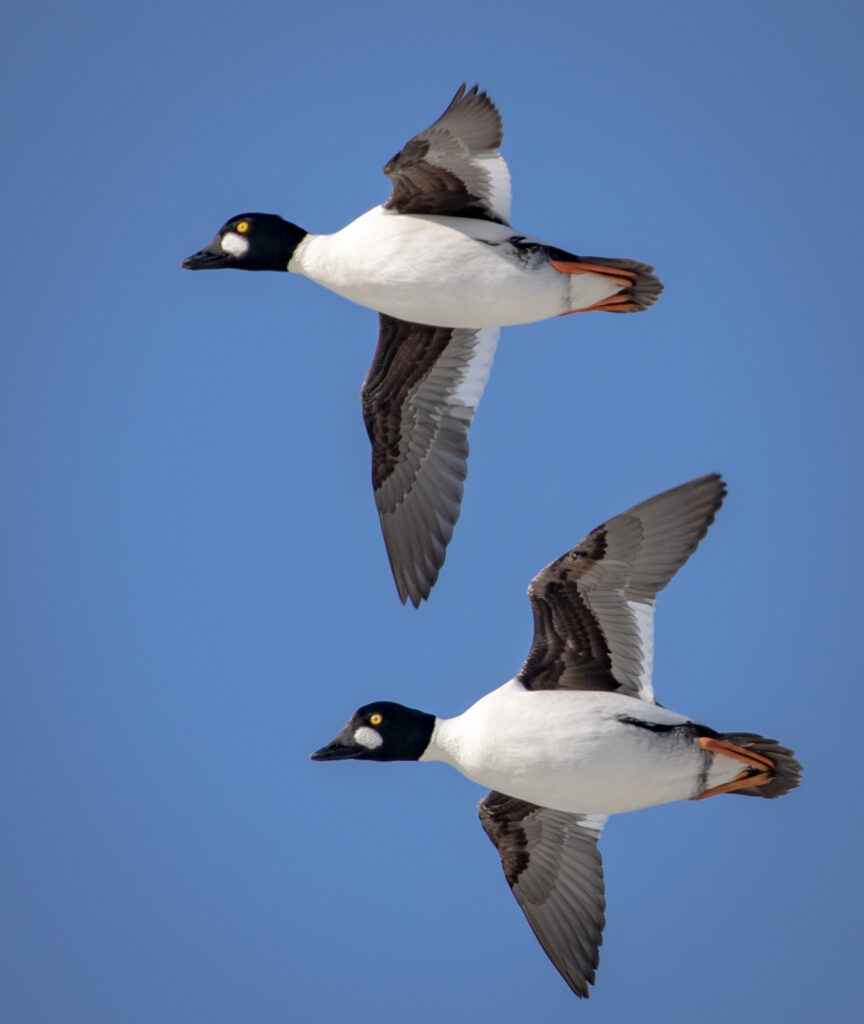
Here’s a GreatBirdPic of a male rising up out of the water, flapping his wings. Nice action, but not Award Worthy quality (remember just a small percentage of shots are that quality).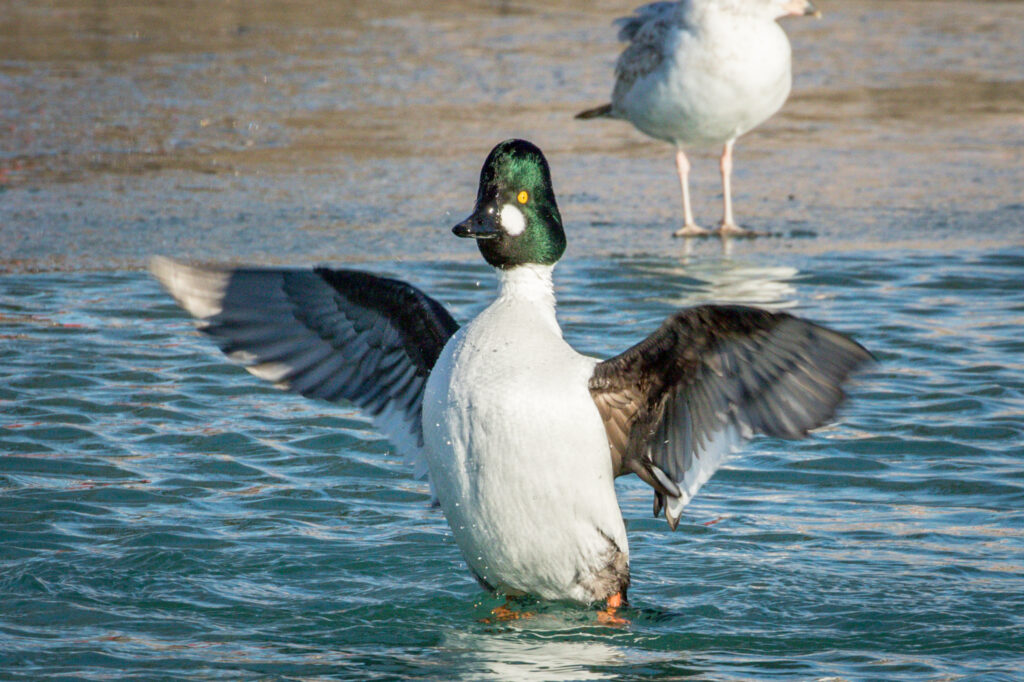
Finally a “Fun” pic. I get a kick out of seeing birds engaged in activities we usually associate with humans (or in this case dogs). The scratching “activity” makes this image more interesting.
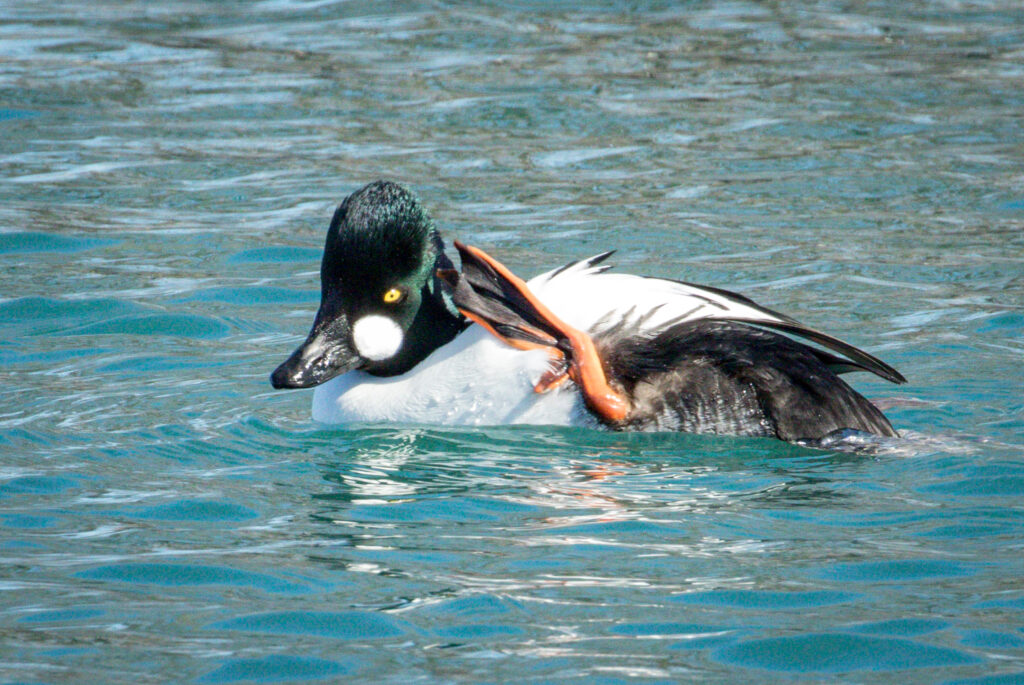
The photograph tells a story = Award Worthy
As previously stated less than 1.5% of my bird photographs are Award Worthy quality based on their technical merits and content. I’m guessing less than half of those tell a story. As shown above, action alone doesn’t convey a narrative. The captured moment of the bird needs to include an activity that the viewer can infer what happened before, during, and after the shot to construct a narrative. Our first shot shows a male displaying a “Head Throw” and a female exhibiting “Jiving,” both part of a mating ritual. It tells a story about this pair of Goldeneye.
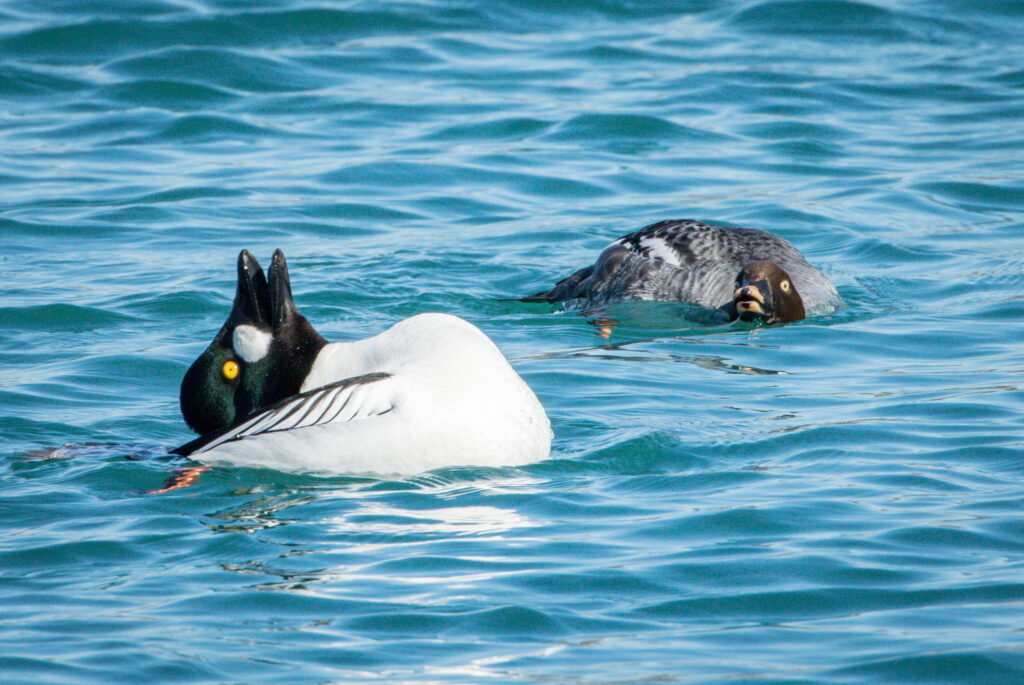
Next are two males and a female, where the female is displaying the “Jiving” pose, which indicates her preference of mate. It makes the viewer think about what prompted the female to adopt the “Jiving” pose, which male is she directing it at, and what happened to the two males afterward.
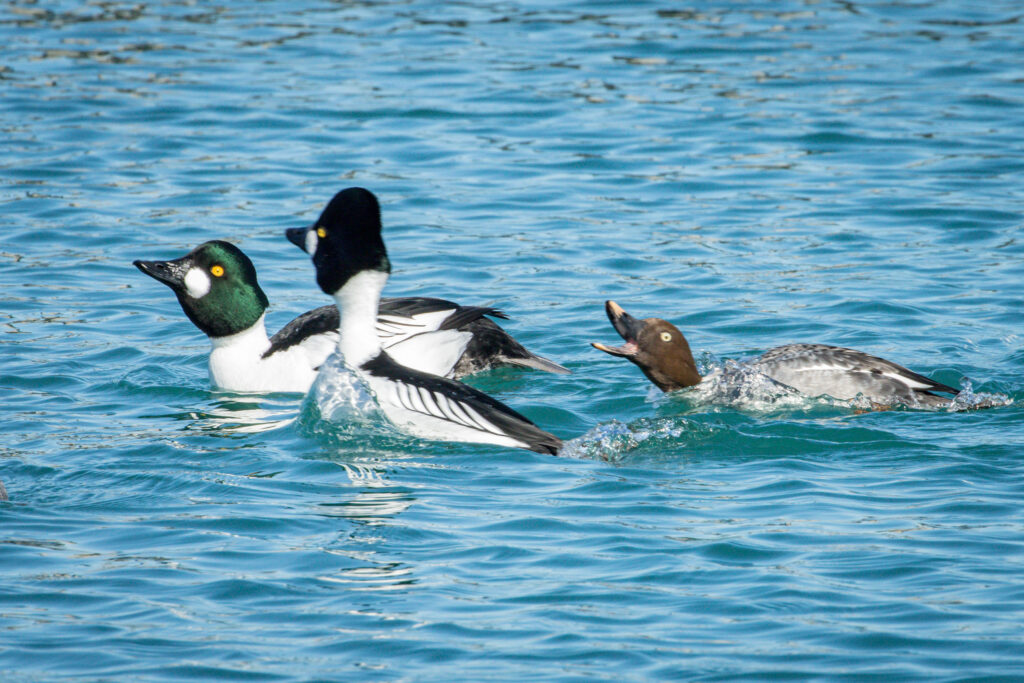
Our final Award Worthy example is of a male in the “Masthead” pose but adding in the “Kick” of water to attract a mate. Did it work?
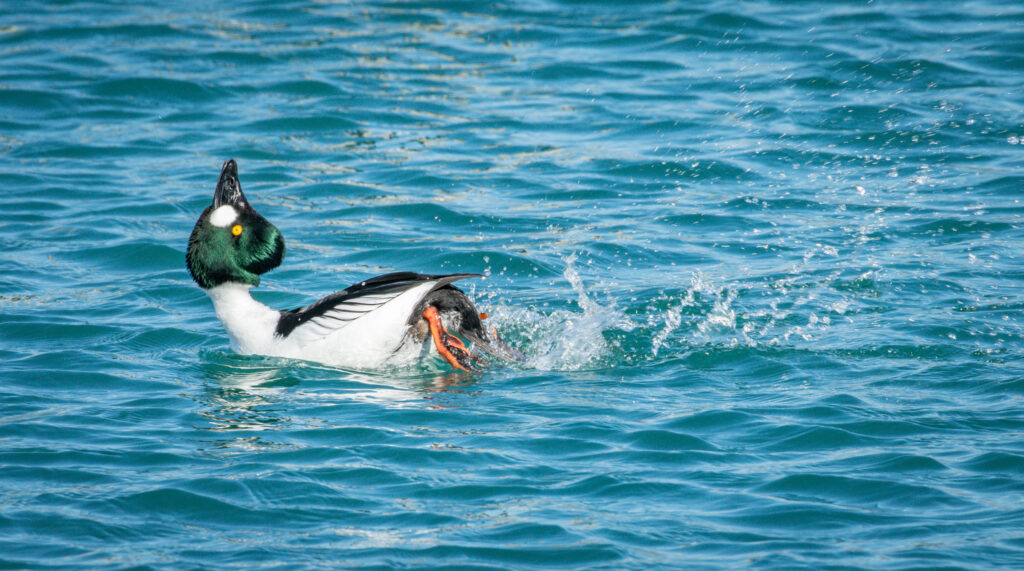
When looking at each of the previous three pictures a viewer sees more than just pictures of birds. They see the birds in action and interacting with each other – the viewer is able to construct a narrative, or story, of what they are witnessing.
You may never enter a bird photography contest, but if you do, select a photograph that tells a story. The judges will love it!
13. Impact
Years ago I was invited up to Marquette, Michigan to the University of Michigan’s Biological Station. My good friend, the late Gary Williams, asked me to teach his students how to use the Apple IIe (I told you it was years ago). Gary was head of the Science Department at Glenbard North High School and ran a summer biology workshop which covered a variety of topics including computers and photography. Although my job was to teach the students how to use AppleWorks, one day I was asked to be the judge for an impromptu photography contest. All of the students went out and took some pictures in the area and submitted one for the contest. This was waaaaay before I got into photography but I was game and played along. I don’t remember most of the photographs the students submitted but one came up on the screen and the group collectively gasped. It was a picture of a tackle box filled with tools used to dissect the specimens they collected and it struck a chord with everyone there – I awarded it first place. Why? Because it had Impact.
What is Impact? It’s when your audience connects with your photograph in a visceral way – they have a force that impresses you. The greater the force the higher the quality the picture is. Have you ever looked at a picture and muttered “Wow” under your breath? That’s Impact. Very few pictures have that kind of effect on viewers but when they do they are in a class of their own.
Below is the Impact Component of the QSAR:
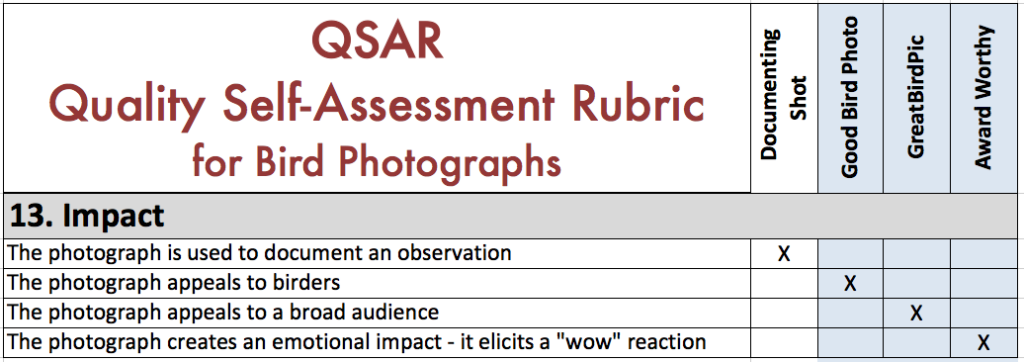
The four Levels of Quality demonstrate how much a photograph impacts the viewer; each Level of Quality is explained below with example photographs from the Four Types of Bird Photograph. The photographs are all of Long-tailed Ducks, one of my favorite waterfowl, and most were taken in Holland, Michigan.
The Photograph is used to document an observation = Documenting Shot
As previously outlined a Documenting Shot has low technical quality. It is difficult for the viewer to connect with a shot if it is out of focus, poorly lit, and generally hard to make out most of the bird’s details. Below is a Long-tailed Duck photograph that I took just to document the sighting for my eBird checklist.
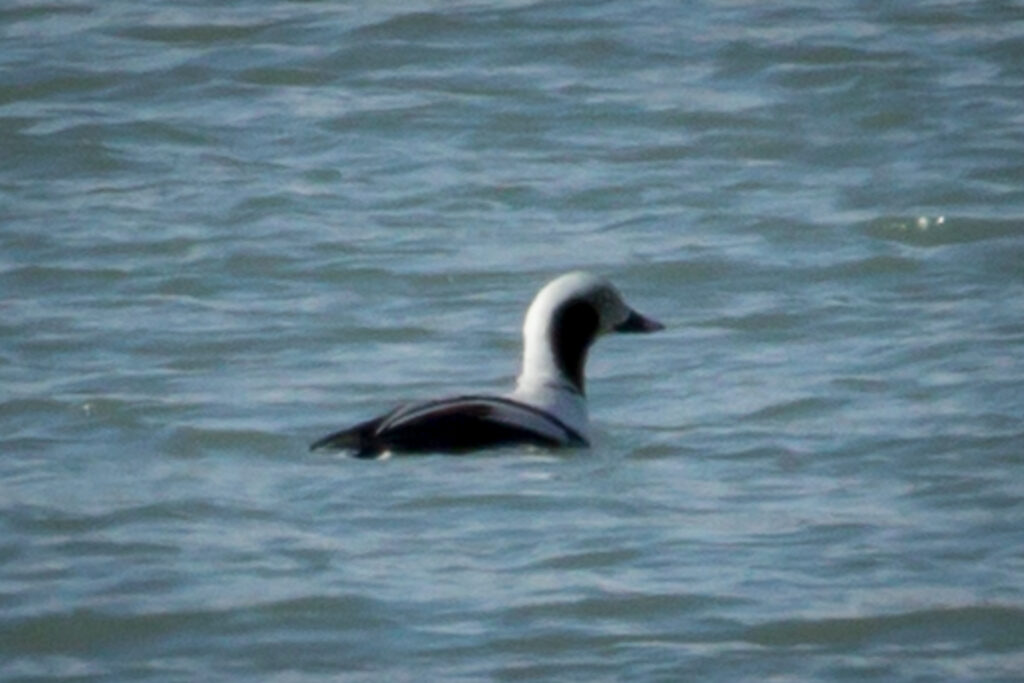
The Photograph appeals to birders = Good Bird Photo
With improved technical qualities the Good Bird Photo shows the typical field marks of the bird, which people who are birders like to see. A non-birder wouldn’t connect to these photographs because they have little or no visual impact. Below are pictures of a female, a male Long-tailed Duck, and the two together.
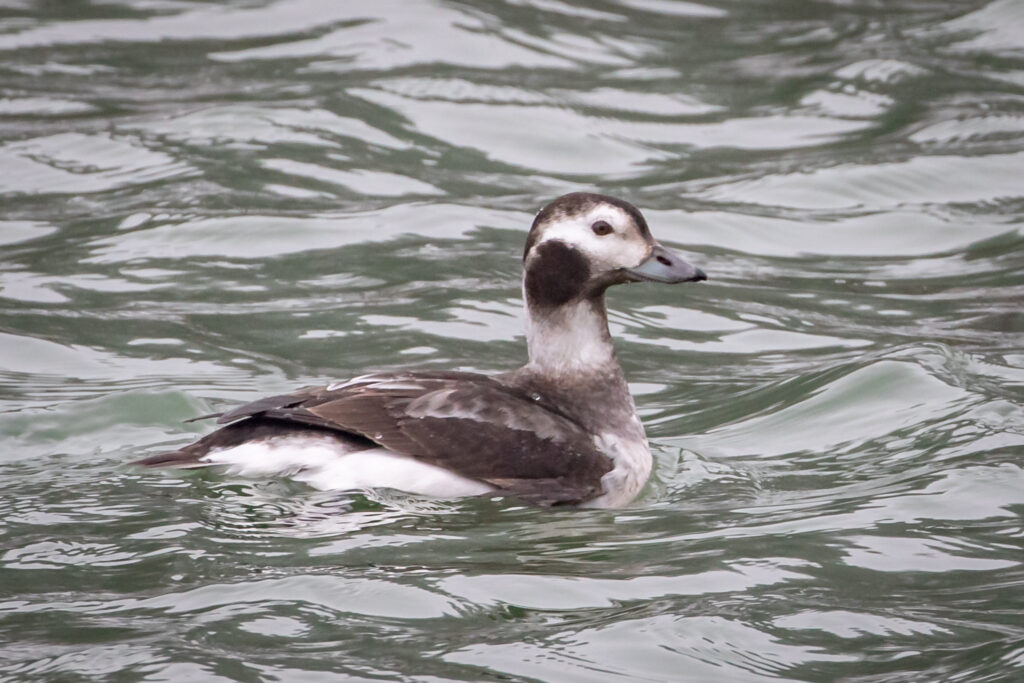
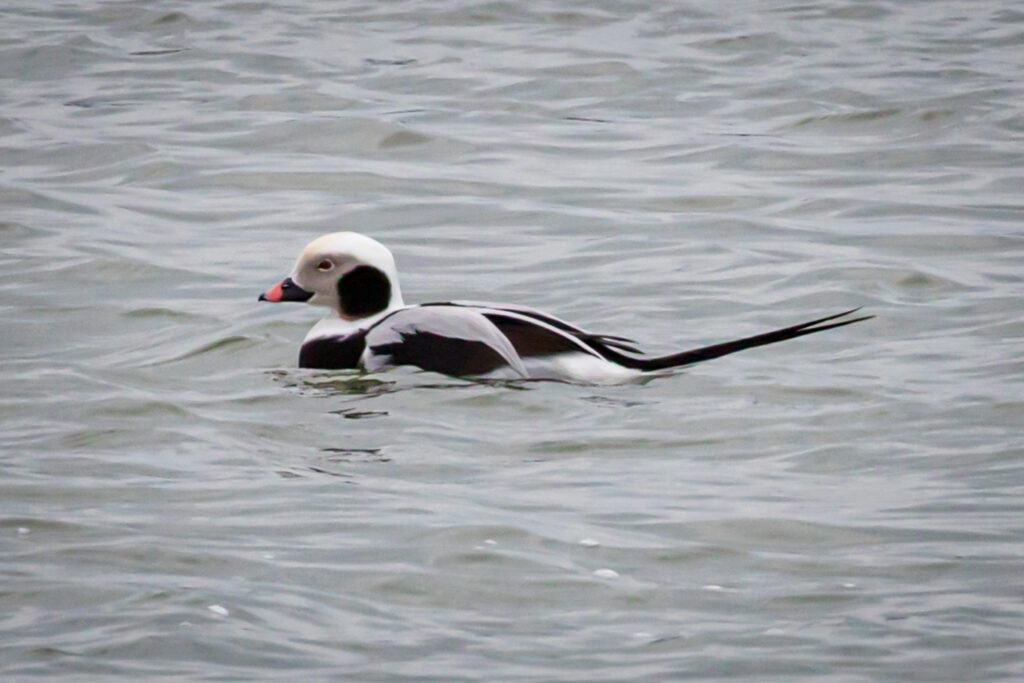
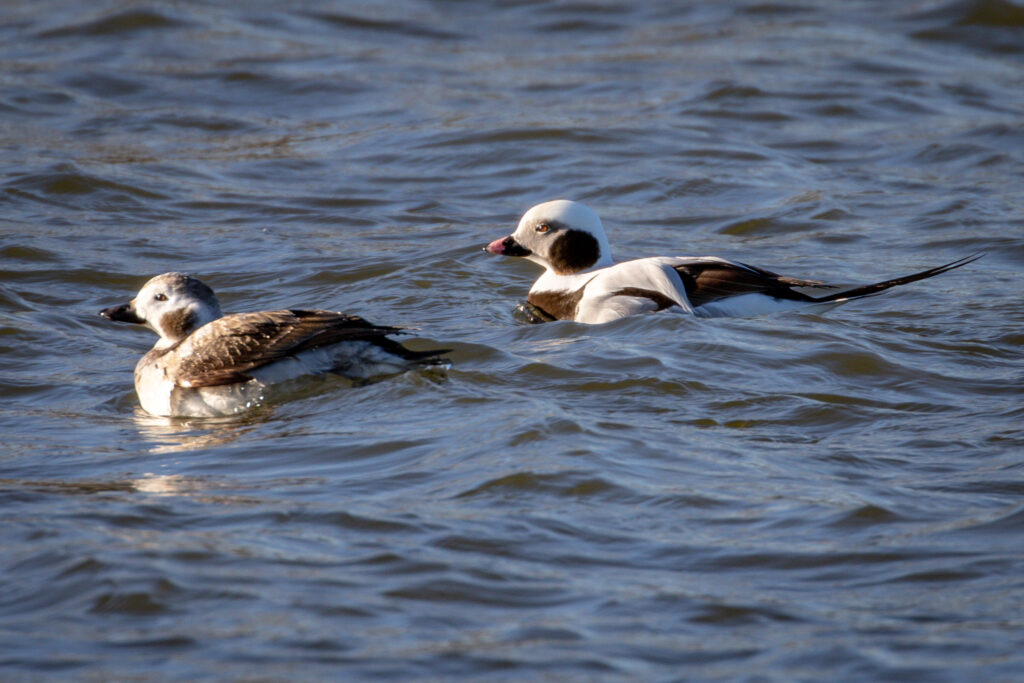
The photograph appeals to a broad audience = GreatBirdPic
When a photograph is technically good and captures the attention of birders and non-birders alike it has some level of impact. Usually these pictures are particularly beautiful and/or depict some action that captures the interest of the viewer. Below are some more Long-tailed Duck photographs that do just that. Even non-birders would look at these and appreciate their beauty.
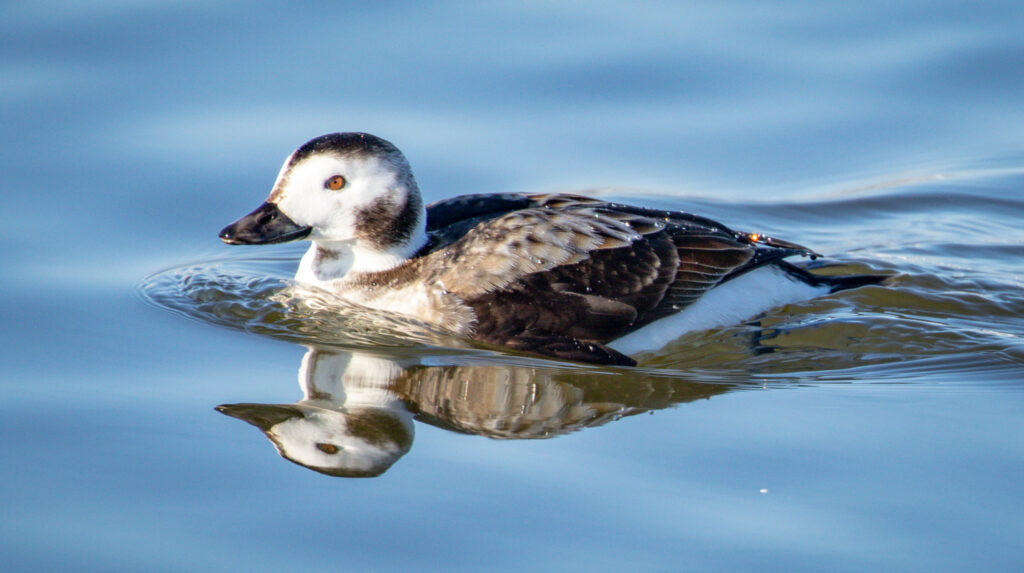
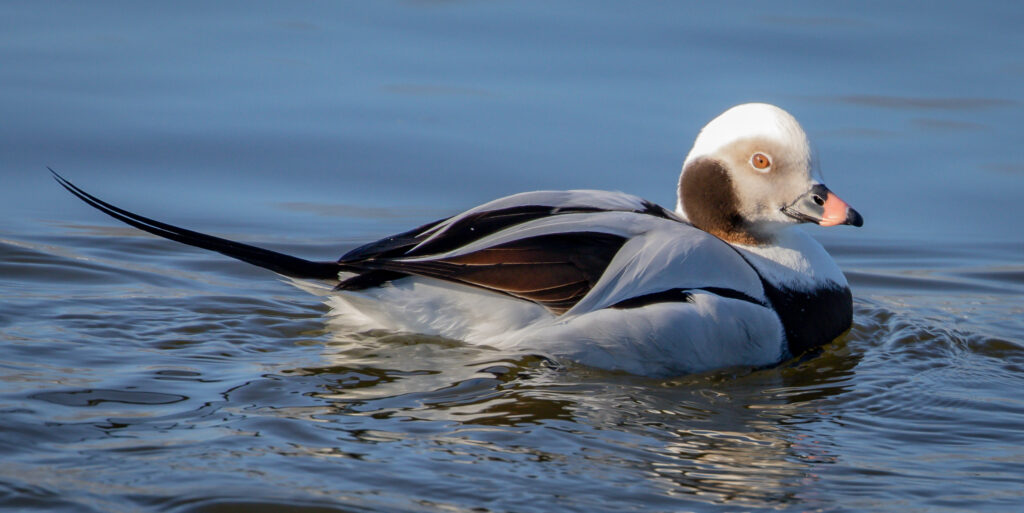
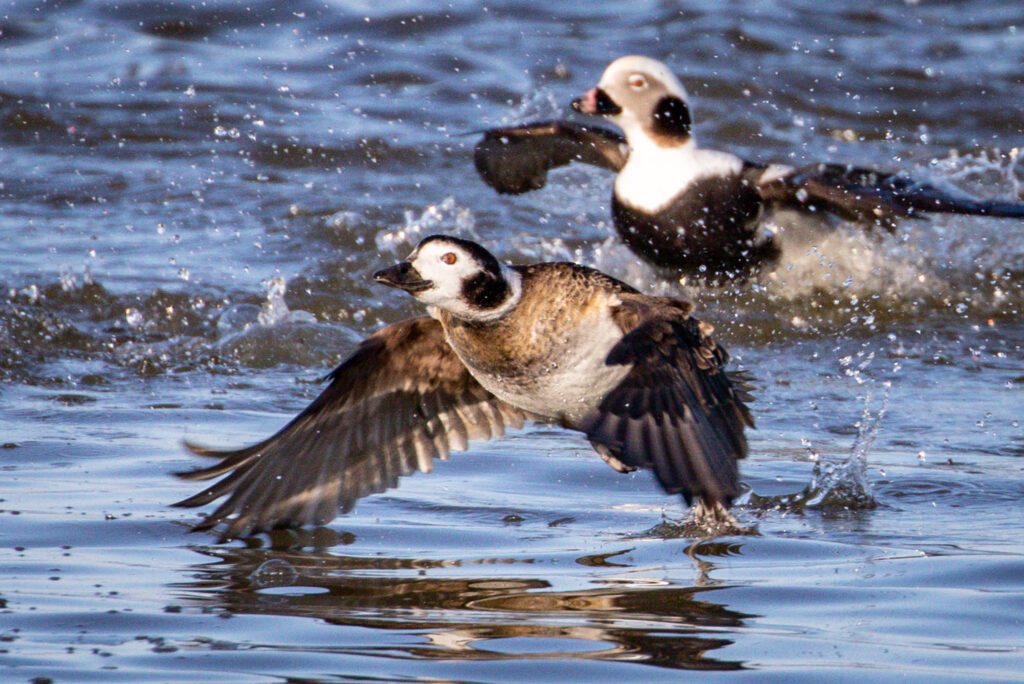
The photograph creates an emotional impact – it elicits a “wow” reaction = Award Worthy
Not many of my pictures elicit a “wow” reaction from viewers. The picture has to have just the right combination of technical merit and captures the bird beautifully. Anyone looking at the image connects more with the overall artistic quality of the photograph than just the bird pictured. Below are three Long-tailed Duck photographs that approach this.
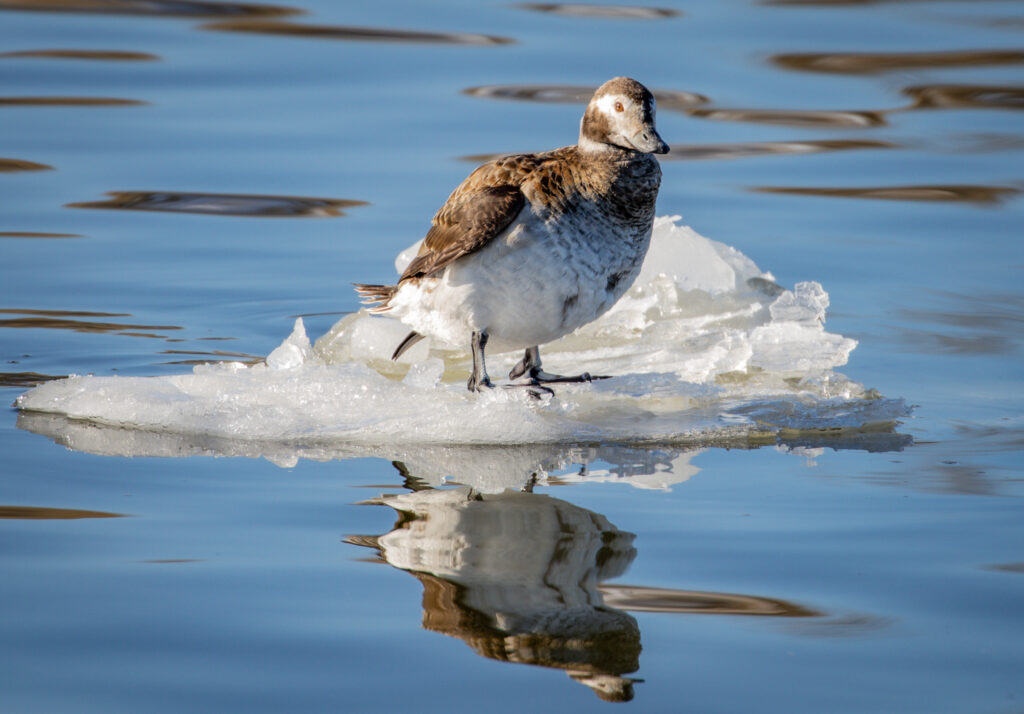
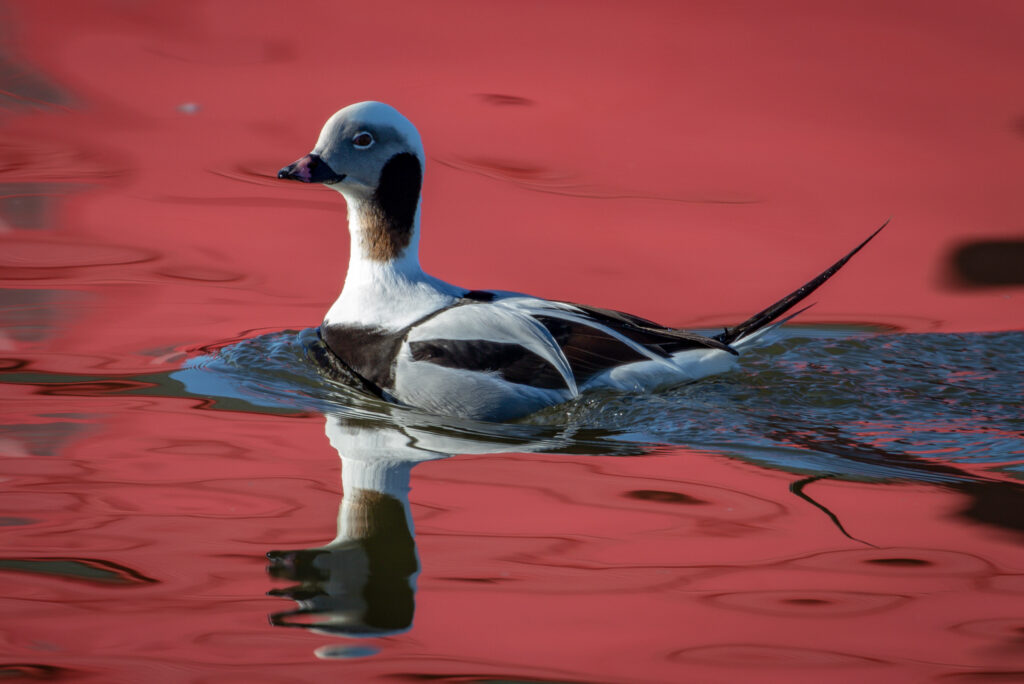
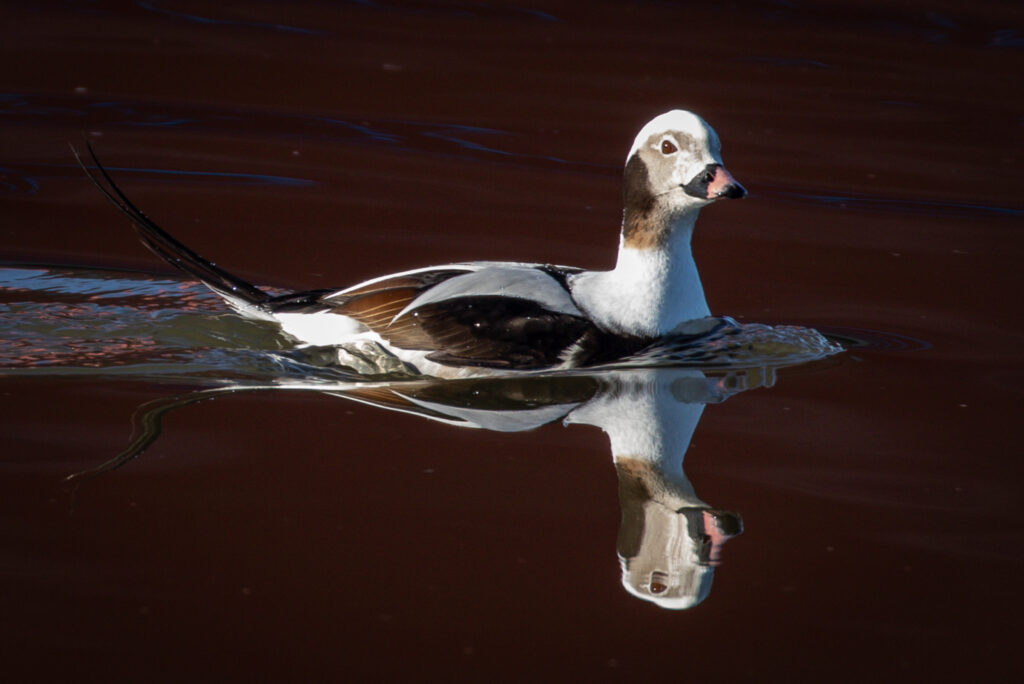
Impact on an audience is hard to judge yourself – you have to show it to others and gauge their reactions. The last picture above is on a wall in our house and an out-of-town friend noticed it and commented on its beauty; it made an impact on her even though she had no idea what kind of bird it was. Not every bird photograph will have Impact but the ones that do should be prominently displayed in your house and entered in contests.
This concludes the explanation of Artistic Quality, the third Image Characteristic of the QSAR. Follows the Rules… is next. You can use the QSAR menu above to jump to any of the major sections of the QSAR.
The QSAR rubric and all bird photographs (unless otherwise noted) are copyrighted by Mike Warner.
If you would like to learn more about GreatBirdPics Click Here. Members can post their own great bird pics, create an online gallery of their works, and receive regular emails containing bird photographs taken by our members and topics on how to improve your bird photography.
